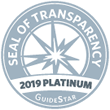Patients with salivary gland disease prior to their diagnosis of papillary thyroid cancer were excluded. Patients were placed into groups based on the increasing radioactive iodine therapy dose administered: Group A (30-35 mCi), Group B (48-58 mCi), Group C (99-110 mCi), Group D (150-160 mCi) and Group E (200-500 mCi). Some of the patients completed a survey about their salivary gland symptoms. Ultrasound features were used to determine salivary gland damage after radioactive iodine therapy.
Of the 667 patients with papillary thyroid cancer treated with radioactive iodine therapy, 570 patients were included in this study. The study group consisted of 435 females (76.3%) with an average age of 43 years. The average radioactive iodine therapy dose received was 100 mCi. There were 143 patients (25.1%) with salivary gland damage on ultrasound and 77 (53.8%) of them had bilateral parotid gland atrophy (loss of tissue). The median follow up was 49 months. The risk of sialadenitis was significantly correlated with both radioactive iodine activity and gender (14.1 % of males had salivary gland damage compared to 28.5% of females). The main risk factor for salivary gland damage was the radioactive iodine dose received. No salivary gland injury was noted in 156 patients who received radioactive iodine therapy doses between 30 mCi and 58 mCi (Group A and B). In patients receiving 100 mCi, 150 mCi, and ≥ 200 mCi (Group C, D and E), atrophy was noted in 21%, 46.9% and 77.8% of patients, respectively. There were 54 patients who completed the salivary gland survey, and 16 of the patients with parotid atrophy (70%) reported parotid gland discomfort.
WHAT ARE THE IMPLICATIONS OF THIS STUDY?
Chronic sialadenitis is one of the more common side effect of radioactive iodine therapy. This study shows that 25% of patients who receive radioactive iodine doses ≥ 100 mCi are affected. The main risk factor for salivary gland damage is the total radioactive iodine therapy dose received. Importantly, chronic sialadenitis was not observed at radioactive iodine doses <100 mCi. Using the lowest effective radioactive iodine therapy dose for papillary thyroid cancer treatment can minimize damage to the salivary gland. Ultrasound is useful to diagnose postradioactive iodine therapy salivary gland atrophy or damage.
— Priya Mahajan, MD



